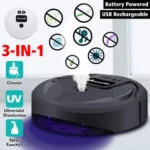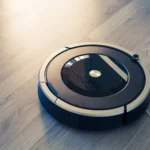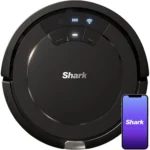Have you ever had your smart vacuum cleaner die out on you mid-clean? Frustrating, right? One of the most important factors in ensuring that your smart vacuum cleaner continues to function properly is to maintain its battery effectively. But with so many contrasting opinions and advice on maintaining batteries out there, you may find yourself scratching your head, perplexed on where to start. Well, worry no more! In this article, we will give you concise Do’s and Don’ts for maintaining your smart vacuum cleaner battery, along with some troubleshooting tips for common battery issues. By following these steps, you will be able to extend the lifespan of your vacuum cleaner battery, and ensure that it always performs to the best of its ability. So let’s get started!
Do’s for Maintaining Your Smart Vacuum Cleaner Battery
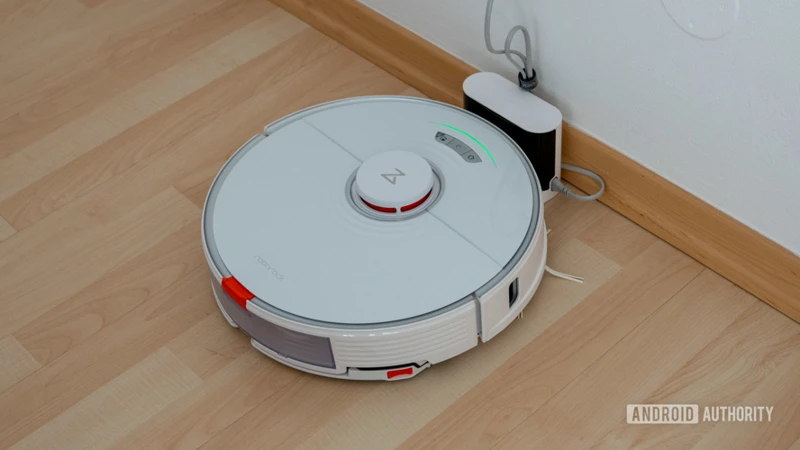
Taking care of your smart vacuum cleaner battery is essential to keep your cleaning routine as efficient as possible. Neglecting the battery can lead to problems such as decreased battery life, overheating, and even swelling. In this section, we will go over the do’s for maintaining your smart vacuum cleaner battery so that it can continue to perform at its best. Remember, following these tips will not only extend the life of your battery but also save you money in the long run. For more information on how to extend your battery life, check out our 10 Tips to Extend Battery Life for Your Smart Vacuum.
1. Charge the Battery Regularly
Keeping your smart vacuum cleaner battery charged is crucial for its performance and longevity. Regular charging can ensure that your vacuum cleaner maintains its optimum power capacity for efficient cleaning. Here are some important tips to consider to keep your smart vacuum cleaner battery charged:
| DOs | DON’Ts |
| Charge the battery after every use. This ensures that the battery remains charged and ready for use when you need it.[1] | Do not overcharge the battery. Overcharging is harmful to the battery and can reduce its lifespan. [2] |
| Charge the battery in a well-ventilated area. This helps to prevent overheating of the battery.[3] | Do not expose the battery to extreme temperatures. Exposure to heat or cold can damage the battery and reduce its lifespan. [4] |
| Charge the battery using the recommended charger. Using the wrong charger can cause damage to the battery.[5] | Do not allow the battery to completely discharge. This can cause damage to the battery and reduce its lifespan. [4] |
It’s important to note that charging your smart vacuum cleaner battery regularly is good practice, but it’s also essential to store the battery properly. Storing the battery at room temperature, away from direct sunlight, and in a dry place can help to prolong its lifespan.[6]
By following these tips, you can maintain your smart vacuum cleaner battery’s performance for efficient cleaning whenever you need it.
2. Store the Battery at Room Temperature
Storing your smart vacuum cleaner battery at the right temperature is crucial if you want to maintain its quality and ensure a longer lifespan. Room temperature is the ideal condition for storing your battery, which is between 20 to 25 degree Celsius. When batteries are exposed to high temperatures, it can cause them to lose their charge fast, deteriorate, or even damage them permanently.
To store your battery, you can make use of a temperature-controlled environment. If you don’t have access to this, find a cool, dry spot around your home to store it in. You can place it in a drawer or cabinet, keeping it away from direct sunlight, heat sources, or moisture.
Another important factor to consider is avoiding stacking objects on the battery when storing it. This could damage the battery or cause it to scratch, affecting its quality and potentially even impacting its performance.
By keeping your battery in the right temperature and environment, you can increase its lifespan and performance, ensuring it lasts for a long time. Follow this simple tip and you could avoid unnecessary expenses on purchasing another battery.
If you’re interested in purchasing a battery or would like to learn more about the top battery brands for smart vacuums, be sure to check out our guide on the top battery brands for smart vacuums. You may also want to read our pros and cons of having a spare battery for your smart vacuum cleaner to help you decide whether this is a worthwhile investment for you.
3. Keep the Battery Clean and Dry
To keep your smart vacuum cleaner battery functioning properly, it’s important to keep it clean and dry. Dirt, dust, and other debris can accumulate on the battery over time, which can affect its performance and lifespan. Additionally, moisture can damage the battery and even cause it to corrode.
Cleaning Tips: To clean your smart vacuum cleaner battery, use a soft, dry cloth to wipe away any dirt or dust that has accumulated on its surface. You can also use a small brush or a can of compressed air to remove any debris that may be stuck in the battery’s crevices. Be sure to wipe the battery down gently and avoid using any cleaning solutions or water, as these can damage the battery.
Drying Tips: After you’ve cleaned the battery, make sure it is completely dry before using it. Moisture can damage the battery and even cause it to corrode, leading to serious performance issues. To dry the battery, use a clean, dry towel to gently pat it down, removing any moisture that may be on its surface. You can also place the battery in a dry, well-ventilated area for a few hours to allow it to dry completely.
| Do: | Don’t: |
|---|---|
| Use a soft, dry cloth to wipe away dirt and dust | Use cleaning solutions or water, which can damage the battery |
| Use a small brush or compressed air to remove debris | Scrub the battery aggressively, which can scratch or damage its surface |
| Pat the battery down with a dry towel to remove moisture | Expose the battery to liquid, which can damage or corrode it |
By following these simple cleaning and drying tips, you can help to ensure that your smart vacuum cleaner battery remains in optimal condition for as long as possible. Remember to keep it clean, dry, and well-maintained for the best performance and longest lifespan.
Don’ts for Maintaining Your Smart Vacuum Cleaner Battery
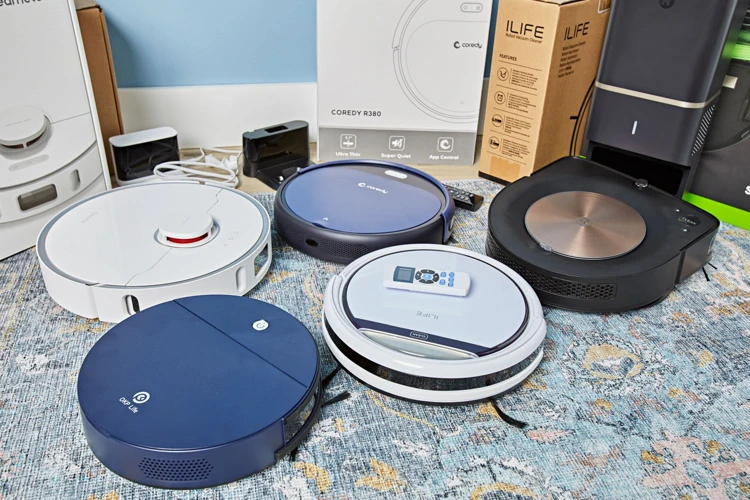
Maintaining your smart vacuum cleaner battery is crucial for keeping your cleaning routine running smoothly. While there are important steps you should take to properly care for your battery, there are also certain things you should avoid doing. Here are some critical “don’ts” to keep in mind to ensure your smart vacuum cleaner battery stays in good condition for as long as possible. By paying attention to these factors, you can help extend the lifespan of your battery and ultimately save money in the long run.
1. Don’t Overcharge the Battery
Overcharging a smart vacuum cleaner battery can cause its chemical composition to break down, which can significantly reduce its lifespan. It’s important not to overcharge the battery beyond its capacity, and to monitor it closely while charging.
What is Overcharging?
Overcharging happens when a smart vacuum cleaner battery is charged beyond its capacity. This can lead to a chemical breakdown of the battery, causing it to lose its ability to hold a charge. An overcharged battery can also become hot and potentially dangerous.
How to Avoid Overcharging
To avoid overcharging a smart vacuum cleaner battery, it’s important to follow the manufacturer’s instructions provided in the user manual carefully. Here are some general tips to keep in mind:
| DO | DON’T |
|---|---|
| Charge your smart vacuum cleaner battery in a safe, dry location | Charge your battery in a damp or humid location |
| Unplug your smart vacuum cleaner once it has reached full charge | Leave your vacuum to charge overnight or for too long period of time |
| Use a smart charger that automatically stops charging once full capacity | Use a charger that wasn’t specifically designed for your particular battery model |
By following these simple precautions when charging your smart vacuum cleaner battery, you can extend its lifespan and ensure maximum performance. Remember that overcharging can lead to potential hazards, so it’s always better to err on the side of caution.
2. Don’t Expose the Battery to Extreme Temperatures
Exposing your smart vacuum cleaner battery to extreme temperatures can significantly affect its performance and lifespan. It’s essential to keep the battery at a moderate and stable temperature for optimal performance. Extreme temperatures can cause the smart vacuum cleaner battery to experience power fluctuations and reduce its overall life span.
Excessive Heat
One of the most damaging things for a smart vacuum cleaner battery is excessive heat. High temperatures can cause the battery to overheat, and this can result in permanent damage. If the battery overheats, it can cause a fire or an explosion, which is not only dangerous but can also damage the vacuum cleaner.
Extreme Cold
On the other hand, exposing your smart vacuum cleaner battery to extreme cold temperatures can also result in performance issues. The cold temperatures can cause the battery’s performance to reduce, and it may not hold its charge for as long as it should. Additionally, the cold temperatures can cause the battery to degrade over time, reducing its overall lifespan.
To help you understand how temperatures affect your smart vacuum cleaner battery, refer to the table below.
| Temperature Range | Effect on Battery |
|---|---|
| -20°C to 0°C | Battery performance may be affected; the battery may not hold its charge for as long as it should. |
| 0°C to 25°C | Ideal temperature range for optimal battery performance. |
| 25°C to 60°C | Battery performance may be affected, and the battery may degrade over time. This temperature range can also cause the battery to overheat, resulting in permanent damage to the battery and the vacuum cleaner. |
It’s essential to store your smart vacuum cleaner battery in a cool and dry location where the temperature is stable and moderate. Avoid exposing the battery to direct sunlight, heat sources, or cold temperatures, as this can cause permanent damage. If you follow these guidelines, your smart vacuum cleaner battery will last longer and perform better.
3. Don’t Allow the Battery to Completely Discharge
It might be tempting to let the battery on your smart vacuum cleaner run out completely before charging it, but this is a major mistake that can cause irreparable damage. Allowing the battery to completely discharge is one of the most common mistakes that people make with their smart vacuum cleaner batteries.
When a battery is completely discharged, it can cause the battery to become damaged, overheat, or even explode. To understand why this happens, it helps to know a little bit about how batteries work. When a battery is fully charged, there is a chemical reaction that occurs inside the battery that allows it to produce an electrical charge. When you use the battery, the charge slowly depletes until there is no more energy left.
Allowing your smart vacuum cleaner battery to become completely discharged is like leaving a car without fuel. If you leave your car without fuel for too long, the engine will become damaged, and in some cases, it may never run again. The same thing can happen with your smart vacuum cleaner battery. If you let it run out completely, it can cause the battery to become damaged and shortened its lifespan.
To ensure your smart vacuum cleaner battery lasts as long as possible, it’s important to keep it charged at all times. Charge it whenever it reaches 20% to 30% battery life to avoid completely discharging. You can also consider using a charging dock that automatically charges the battery when the vacuum cleaner is not in use.
Table:
| Do | Don’t |
|---|---|
| Charge the battery regularly | Allow the battery to completely discharge |
| Store the battery at room temperature | Expose the battery to extreme temperatures |
| Keep the battery clean and dry | Overcharge the battery |
Troubleshooting Common Battery Issues
As with any electronic device, smart vacuum cleaners with rechargeable batteries may encounter some issues from time to time. It can be frustrating to deal with battery problems, but fortunately, most issues can be easily resolved with some troubleshooting. In this section, we’ll explore some common battery issues that you may encounter, and provide helpful tips for resolving them. So, stay tuned and let’s get started!
1. The Battery is Not Holding a Charge
One of the most common issues with smart vacuum cleaner batteries is when they do not hold a charge. This can be frustrating, but there are a few reasons why this might be happening. Below are some possible reasons why your smart vacuum cleaner battery is not holding a charge and what you can do about it.
| Possible Reason | Solution |
|---|---|
| The battery is old or damaged. | Replace the battery with a new one that is compatible with your smart vacuum cleaner. |
| The battery is not fully charged. | Ensure that you charge the battery regularly and completely before each use to keep it at full capacity. |
| The battery is not being charged correctly. | Make sure that you are using the correct charger for your vacuum cleaner and that it is not overcharging the battery. If the battery is charged too quickly or at too high a voltage, it can cause damage. |
| The battery is not compatible with your vacuum cleaner. | Check the compatibility of the battery with your vacuum cleaner. If it is not compatible, then you may need to purchase a new battery that is designed to work with your vacuum cleaner. |
It’s important to note that if you continue to have issues with your smart vacuum cleaner battery not holding a charge, it may be a sign of a more serious problem with your vacuum cleaner itself. In this case, it may be best to consult with a professional or contact the manufacturer for assistance. By taking the proper steps to maintain and troubleshoot your smart vacuum cleaner battery, you can ensure that it continues to work efficiently and effectively for years to come.
2. The Battery is Overheating
If you notice that your smart vacuum cleaner battery is overheating, it’s important to take action immediately to prevent any damage or safety hazards. Here are some steps you can take:
- Stop Using the Vacuum Cleaner – If you notice that the battery is overheating while you are using the vacuum, stop using it immediately. Continuing to use the vacuum can cause further damage to the battery or even start a fire.
- Allow the Battery to Cool – Once you have stopped using the vacuum, allow the battery to cool down completely before attempting to troubleshoot the issue.
- Check for Obstructions – Overheating can be caused by obstructions in the vacuum’s motor or air flow. Check for any blockages and remove them if present.
- Check the Charger – If the battery is overheating while being charged, determine if the charger is functioning properly. An incorrect voltage could be causing the battery to overheat. Try using a different charger or contact the manufacturer for assistance.
- Inspect the Battery – If none of the above steps solve the issue, inspect the battery itself for any damage. If you notice any damage or swelling, it’s best to replace the battery to prevent any safety hazards.
Remember to always exercise caution when dealing with electronic devices and their batteries. If you are unsure how to troubleshoot an issue or it seems too complex to handle on your own, contact the manufacturer for assistance or seek professional help.
3. The Battery is Swollen
If you notice that your smart vacuum cleaner battery has become swollen, it is important to take action immediately. A swollen battery can indicate that there is a problem with the battery itself or the charging process. It can also be a safety hazard as a swollen battery can potentially rupture or leak hazardous chemicals.
What Causes a Swollen Battery?
There are several reasons why a smart vacuum cleaner battery might become swollen. The most common cause is overcharging. When a battery is overcharged, the electrolyte inside the battery can break down and create gas. This gas causes pressure to build up inside the battery and can lead to swelling.
Another cause of a swollen battery is physical damage, such as dropping the battery or exposing it to extreme temperatures. When a battery is damaged, it can also release gas and cause swelling.
Finally, a swollen battery can be a sign of age. Over time, all batteries will gradually lose their capacity to hold a charge and can become swollen.
What to Do if Your Battery is Swollen?
If you notice that your smart vacuum cleaner battery is swollen, do not attempt to use it. Disconnect the battery from your vacuum cleaner and place it in a safe, well-ventilated area.
Do:
| Do | Don’t |
|---|---|
| Handle the battery with care. | Ignore a swollen battery. |
| Dispose of the battery properly. | Attempt to puncture or tamper with the battery. |
| Use caution if you need to move the swollen battery. | Store the swollen battery with other batteries. |
Conclusion
By following the do’s and don’ts for maintaining your smart vacuum cleaner battery, you can help prevent issues such as swelling. However, if you do notice that your battery has become swollen, it is important to take immediate action to avoid any safety risks. Dispose of the battery properly and replace it with a new one to ensure continued optimal performance from your smart vacuum cleaner.
4. The Battery is Not Charging
If you’re having trouble charging your smart vacuum cleaner battery, there couple of reasons why this could be happening. Here are some potential solutions to try:
| Potential Issue | Solution |
|---|---|
| The charging port is dirty or obstructed | Clean the charging port: Turn off and unplug the vacuum cleaner. Use a small, soft-bristled brush to gently remove any debris or dust from the charging port. You can also use compressed air or a cotton swab to clean hard-to-reach areas. Plug the vacuum cleaner back in and try charging again. |
| The battery is too hot or too cold | Move the battery to a room temperature environment: If the battery is too hot or too cold, it may prevent it from charging. Remove the battery from the vacuum cleaner and place it in a room temperature environment for 30 minutes to an hour. Once the battery is at room temperature, place it back into the vacuum cleaner and try charging again. |
| The battery is damaged or defective | Replace the battery: If the battery is damaged or defective, it may need to be replaced. Check the warranty on your vacuum cleaner to see if battery replacement is covered. If not, you may need to purchase a new battery from the manufacturer or a third-party seller. |
| The charging cable is damaged or defective | Replace the charging cable: If the charging cable is damaged or defective, it may prevent the battery from charging. Check the cable for any frayed wires or damage to the connector. If there is damage, you will need to replace the cable with a new one. |
By following these potential solutions, you may be able to get your smart vacuum cleaner battery charging again. If none of these work, it may be time to reach out to the manufacturer for further assistance.
Conclusion
After reading this article about maintaining your smart vacuum cleaner battery, we hope you are better equipped with the knowledge to keep your vacuum running smoothly for years to come. Remember to follow the do’s and don’ts of battery maintenance, such as charging regularly and avoiding extreme temperatures. It is also important to troubleshoot any common battery issues, such as a battery that is not holding a charge or is overheating. By taking these steps, you can help prevent costly replacements and ensure your smart vacuum cleaner is ready to tackle any mess. Don’t neglect your battery’s maintenance and it will reward you with efficient and reliable cleaning. Keep your home clean effortlessly and let your smart vacuum cleaner do the work for you!
Frequently Asked Questions
1. Can I leave my smart vacuum cleaner battery on charge overnight?
No, overcharging the battery can damage it and shorten its lifespan. It’s best to unplug the charger once the battery is fully charged.
2. Is it okay to store the battery in a cold garage or basement?
No, extreme temperatures can damage the battery. Store it somewhere with a stable room temperature instead.
3. How often should I clean my vacuum cleaner battery?
You should clean the battery as needed, especially if you notice dirt or debris accumulating on it.
4. Is it harmful to charge the battery before it’s completely dead?
No, it’s actually better for the battery to charge it when it’s not fully depleted. Lithium-ion batteries have a “memory effect,” which means they can lose capacity if consistently charged from less than full.
5. How do I know if my battery is overheating?
If you notice the battery feels hot to the touch or you smell a burning odor, it may be overheating. Stop using the vacuum cleaner immediately and allow the battery to cool down.
6. Can I use third-party chargers to charge my vacuum cleaner battery?
No, using chargers that were not specifically designed for your vacuum cleaner can be dangerous and cause damage to the battery.
7. Why is it important to keep the battery dry?
Moisture can cause the battery to malfunction and potentially harm you or the vacuum cleaner. Always store and handle the battery in a dry environment.
8. What should I do if my vacuum cleaner battery won’t charge at all?
First, check if the charger is properly connected and functional. If that doesn’t work, you may need to replace the battery.
9. What happens if I continue to use a swollen battery?
A swollen battery can be dangerous and potentially explode or catch fire. Stop using the battery immediately and dispose of it properly.
10. How long should I expect a fully charged battery to last?
The battery life can vary depending on the model and usage. Your vacuum cleaner manual should have an estimated battery life, typically ranging from 20 minutes to an hour. It’s important to recharge the battery before it’s completely depleted to extend its lifespan.


